Review: LG K20 V for Verizon Wireless
May 26, 2017, 2:15 PM by Eric M. Zeman
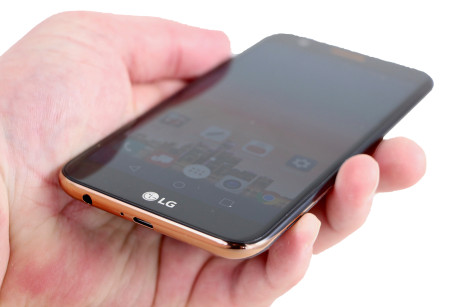
The LG K20 V is one of the least expensive Android smartphones available from Verizon Wireless. This low-cost handset features basics such as a 5.3-inch 720p screen and entry-level Snapdragon 435 processor from Qualcomm. Things that set it apart include a good fingerprint reader and excellent battery life. A few things, however, manage to hold this phone back. Here is Phone Scoop's in-depth review.
Hardware
Is It Your Type?
The K20 V from LG is an inexpensive Android handset sold by Verizon Wireless. If you're a Big Red subscriber, the K20 V makes sense for those who prefer a simple, bread-and-butter experience or are perhaps buying their first smartphone.
The K20 V is essentially the same as the “K20 plus” sold by T-Mobile and MetroPCS. The radio frequency bands are different to match the T-Mobile network, and it has more storage, but it's otherwise the same phone. While we didn't test that version here and performance could differ slightly, 95% of this review should apply if you're considering the K20 plus.
Body
LG did what it could to dress up the K20 V, which falls close to the bottom of Korean phone maker's lineup of smartphones. It wasn't entirely successful. The phone relies on a mix of materials, colors, and textures to define its personality, but there's no escaping the phone's status as a budget-friendly bore.
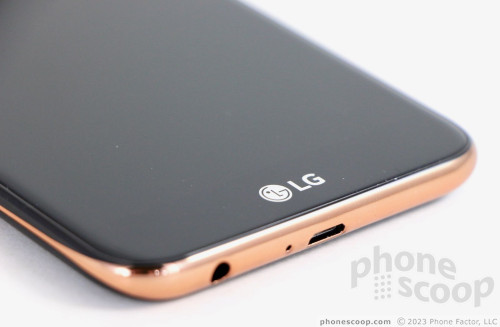
The generic curves do nothing to help the phone stand out. It could be any phone from a distance of more than a few feet. The rear panel is straight out of 2012 and gives me a case of the shudders. And yet LG found a way to inject at least some individuality into the K20 V's appearance. The front relies on 2.5D curved glass and LG rimmed the panel with bronze-colored trim. Bronze is rare for phones; phone designers typically dress up their devices with accents that lean closer to chrome or gold. The bronze alone salvages the K20 V's looks as far as I am concerned.
With a 5.3-inch screen, the phone is what I'd call average in size. I'm glad it measures less than 6 inches tall and less than 3 inches wide. This means it fits in your hand comfortably. The slim 7.9mm profile helps the phone find its way into jeans pockets without much trouble.
LG did a fine job selecting the K20 V's materials and assembling them. I'm very pleased with the quality of the curved glass on front. It's glued into a thin plastic frame. The bronze trim circles the entire outer edge of the phone and also acts as a secondary frame of sorts to separate the front and rear halves. The removable plastic rear panel affixes to the bronze frame on back. All these pieces are assembled tightly. I didn't see any odd gaps, and the materials all feel good for this price point.
The K20 V's front face is nearly all black. The display hides within the frame well, meaning the really thick bezels are more or less invisible when the screen is off. LG certainly could have cut down the bezels a bit, but that likely would have drive up the phone's cost. The earpiece speaker is the most noticeable aspect of the phone's forehead thanks to the bronze-colored metal grille. LG's logo is painted on in chrome (what, no bronze?) under the display. There are no physical buttons (LG uses on-screen controls), so the glass is uninterrupted from top to bottom.
Like many LG handsets, the K20 V relies on a rear-mounted screen lock / power button. This arrangement takes some getting use to, but generally works out well. One of the K20 V's primary improvements over last year's K10 is the addition of the fingerprint reader, which doubles as the lock button. The round key is indented, making it simple to find without looking. Travel and feedback are good.
I appreciate the bronze accent that helps the camera module stand out visually. The module itself is raised just a bit so it's easier to differentiate from the fingerprint reader below, but I still managed to mar the lens with fingerprints.
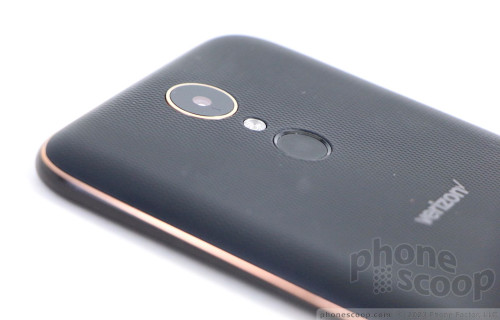
The rear panel itself is a flat, textured affair made of black plastic. Both Verizon's and LG's logos are painted on. The panel can be pried off thanks to a small notch buried in the side edge of the phone. I wish the plastic weren't quite so flimsy. Believe it or not, the K20 V's battery is removable. (It's becoming harder and harder to find phones that include removable batteries.) The slots for the microSD and SIM cards are stacked atop one another. You may swap memory cards while the battery remains in place.
You'll find the volume toggle on the left edge. It's a small button, but the profile is good enough that you'll have no problem finding it. Travel and feedback are a bit weak. The microUSB port and 3.5mm headset jack are on the bottom.
It's worth noting that the LG K20 V is not rugged, nor is it water-resistant.
This Android phone offers well-made hardware considering the cost, and yet I wish it had just a bit more visual pizzazz.
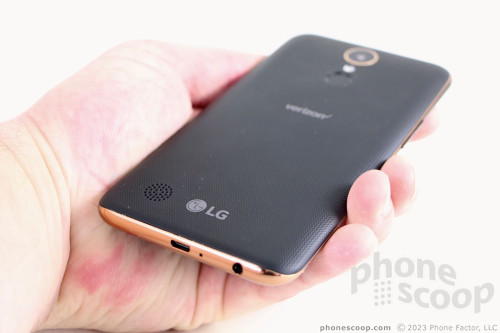
Screen
The K20 V has a 5.3-inch 720p HD LCD screen adorning its face. The size/resolution combo isn't the best; I was able to spot individual pixels with ease when holding the phone close to my eyes. I wish the pixels were packed in more densely. You'll be fine when doing most things with the phone, but video is definitely not as rich as it could be. Virtual reality applications are out of the question.
The LCD panel does put out plenty of light. I was able to read the screen indoors and out, and reflectivity is kept to a minimum. Viewing angles are quite impressive. But overall, the screen matches the phone's low-cost trappings.
Signal
The K20 V performed on par with other devices I've tested on Verizon's network. The phone always held onto LTE 4G in my neck of the woods, even under the worst network conditions. The K20 V was consistently able to make and receive calls, and didn't drop any during my tests. Data speeds are acceptable for most tasks, but I'd be happier if they were a bit faster. You won't have trouble browsing the web, shopping for apps, or playing games, but network-intense activities like streaming media were not as smooth as I'd like them to be.
Sound
LG assembled a fine voice phone in the K20 V. Voice calls sound perfectly clear via the earpiece with no audible distortion even at the highest volumes. Voices come through the earpiece a bit sharp, but otherwise pleasing. I was able to hear calls at home, in moving cars, and busy coffee shops without issue. (Keep in mind, these were all standard calls over Verizon's legacy voice network. The K20 V supports VoLTE with HD Voice, too, though we were unable to test it.) People I spoke to through the K20 V said I sounded great.
The speakerphone does an equally good job. Conversations are loud and clear whether you're in the office, the car, or out and about.
Ringers and alerts were loud enough to get my attention most of the time. The vibrate alert could be a bit stronger.
Battery
If you take the time to remove the rear cover, you'll see the 2,800 mAh battery that LG bestowed upon the K20 V. The battery is more than a match for the phone. Not only did the K20 V push from breakfast to bedtime on a single charge, it did so with plenty power left at the end of the day. I had total confidence when using the K20 V, knowing I needn't worry about running low on power.
The phone doesn't support rapid nor wireless charging.
Bluetooth, GPS, NFC, WiFi
The K20 V's secondary radios all functioned properly. Bluetooth was painless to use. I made several calls via my car's hands-free system and they sounded pretty good. Music had a full, balanced sound when passed through a good pair of Bluetooth headphones. The phone had no issue connecting to other phones, accessories, and PCs for swapping files and such.
Google Maps and the K20 V's GPS radio worked well. The phone consistently located me within a few seconds and was accurate to about 20 feet. Real-time navigation between points worked very well.
The WiFi performed admirably. The phone doesn't have NFC.
Software
Lock Screen
The K20 V doesn't have an always-on display, but it does have LG's KnockOn and Knock Code for waking and unlocking the phone.
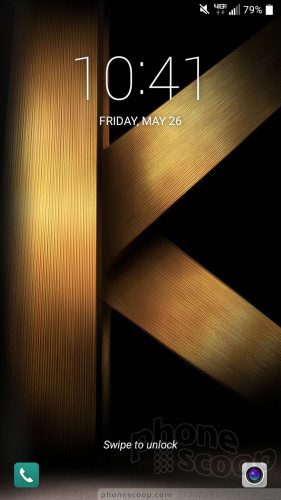
KnockOn will wake the display whenever you double tap the K20 V's display. It reveals the clock/notification combo at the top of the screen, in addition to shortcuts for the phone and the camera in the bottom corners. KnockOn is most helpful when the phone is sitting on a table or desk. KnockCode is a bit more complex. It's a security tool you can opt to use for waking and unlocking the phone in one step through a custom pattern of taps. LG's software walks you through the process of recording a pattern.
I like that the lock screen clock is easy to read thanks to the large font. Users can fine-tune notifications for each individual app on the phone, which means plenty of control over what pops up in the screen, and when.
Security options include PIN, pattern, password, and print. The fingerprint reader is easy to train. It takes about a minute to setup each print. The reader is quick and accurate.
Home Screen
The K20 V runs Android 7 Nougat with LG's user interface on top. When you first fire up a new K20 V, the home screen panels are crammed with Verizon Wireless apps, widgets, and shortcuts.
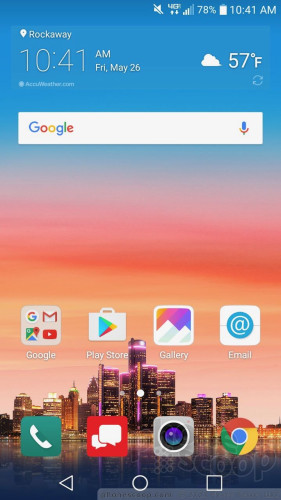
By default there's no app drawer, so all the installed apps are in folders on the home screens. You can turn on the app drawer if you prefer a cleaner home screen experience. I appreciate that apps can be arranged in a denser grid (4x5) on the home screen. This lets you make more effective use of the screen's real estate.
The LG app drawer is as powerful as ever. It allows you to hide apps you know you won't use often (cough, Verizon bloatware, cough), and bring them back when needed. You can always sort apps to appear alphabetically, by frequency, or by install date.
Home Screens - With App Drawer
The phone lets you rearrange the back, home, and app switcher buttons at the bottom of the screen. This can be helpful if you're coming from a Samsung handset. The phone supports up to five buttons down there, including special LG options such as a button for QSlide apps. The K20 V also lets you control screen transitions, fonts, font sizes, and more. There are a few themes on board, too.
LG included EasyHome with the K20 V, which simplifies the user interface for those not used to the full Android experience.
The K20 V supports split-screen multitasking, as well as miniaturized apps optimized for one-handed use.
The Quick Settings panel includes five toggles across the top, as well as a slide to control screen brightness. You can customize which toggles appear in the Quick Settings screen and swipe the toggles down to see more controls. The panel also allows you to access, act on, and dismiss notifications.
The main settings tools are broken down into several tabs by default, though you can adjust them so they appear on a single screen. I found the settings easy to use.
The K20 V relies on a Snapdragon 435 processor with 2 GB of RAM and 16 GB of internal storage. The specs are close to scraping the bottom of the barrel on a modern phone. Since LG's software takes up so much space (about half) I recommend getting a memory card. The processor gets the job done. The K20 V never felt slow while I tested it.
Camera
The K20 V doesn't have a physical camera button, though you can launch the camera with a quick double press of the volume-down button, or the lock screen shortcut. The app opens up in a jiffy.
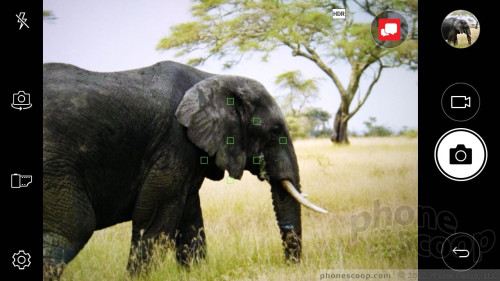
The camera interface is pretty straightforward. Several controls run down the left side of the main screen, such as the flash, user-facing camera, film effects (filters), and settings. These controls cannot be customized.
The K20 V does not include any fun or advanced shooting modes. HDR — the only major feature — is available via the settings menu. You can set HDR to “auto”, but I wish an HDR toggle was accessible from the main viewfinder. The K20 V lacks creative stuff like timelapse and slow-mo, (though third-party alternatives are available in the Play Store.)
The user-facing camera includes beautification slider and LG's selfie shot tool, which lets you snap a shot by making a fist gesture and then opening your hand (this starts a timer.) The selfie cam also includes a screen-based “flash” for shooting in darker spaces.
Tap the screen to focus your shot, then tap the shutter button to capture the image. The K20 will focus without tapping the screen, but I found using the tap-then-shoot method produces much sharper pix. I wish the K20 V's camera software were a bit faster at capturing pictures.
Photos / Video
The K20 V's 13-megapixel camera takes acceptable pictures for this class of device, though it can't compete with even slightly more expensive phones.
Focus is often not sharp enough for my eyes, as most images I captured had a soft look to them. They're good enough to use as everyday pictures, but most consistently sharp images would be better. Exposure is all over the place. The K20 V has real trouble handling high-contrast environments, even with HDR on. You'll notice a halo effect in photos that have strong light sources. This is no good. At least colors and white balance are decent in most images.
The 5-megapixel selfie cam produces passable results, but if you *really* love yourself you might be disappointed. The selfie shooter often delivers soft focus, lots of grain, and an exaggerated halo effect if any lights are in the background. The reasonably good color and white balance are not enough to salvage most pictures.
The K20 V captures either 1080p or 720p HD video. The 1080p stuff is acceptable. I was pleased enough with focus, color, and exposure when shooting some clips. If you're indoors you'll see tons of grain and poorer exposure.
The K20 V barely gets the job done for everyday shooting. I wouldn't trust it for any important photos, though.
Wrap-Up
The K20 V is a value phone that delivers an uneven amount of value. The hardware is fine, if a bit uninspired. The materials and assembly are decent, but I was a bit disappointed by the screen's resolution. Thankfully core functions such as call quality and battery life are above average. I wish data performance were better.
The software is highly flexible. The core Android 7 Nougat operating system is powerful and LG included a bevy of ways to adjust the home screen experience to suit a wide range of potential users, including experts and novices. The camera application is simple to use, though it falls short when it comes to advanced features. More importantly, photo quality just barely gets the job done.
Verizon sells the LG K20 V for $168, or about $7 per month on a payment plan. I've seen better $99 phones from the likes of ZTE and Motorola. That said, people locked into Verizon's service can do worse. I'd only recommend the K20 V to novice or older users who need the basic features (battery, calling) more than advanced functions.

Comments
No messages


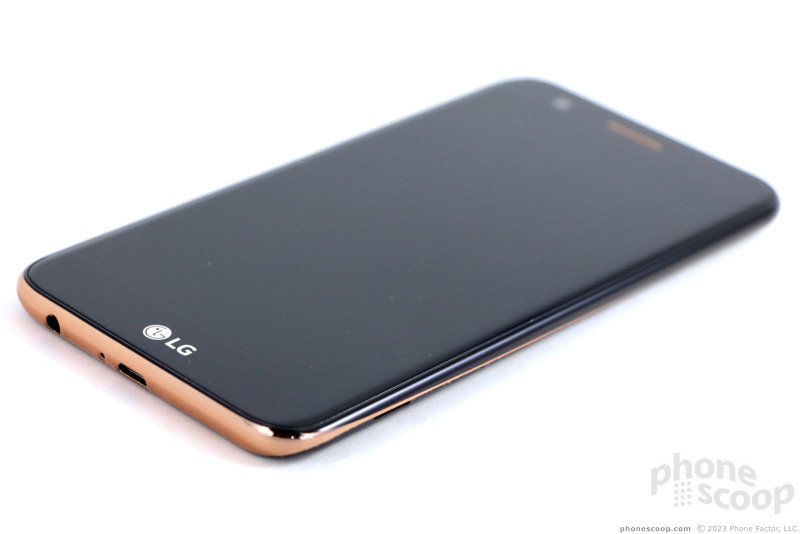














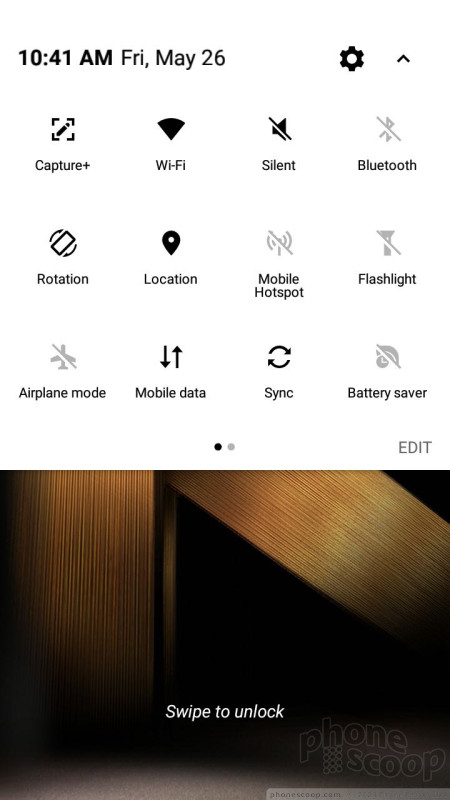





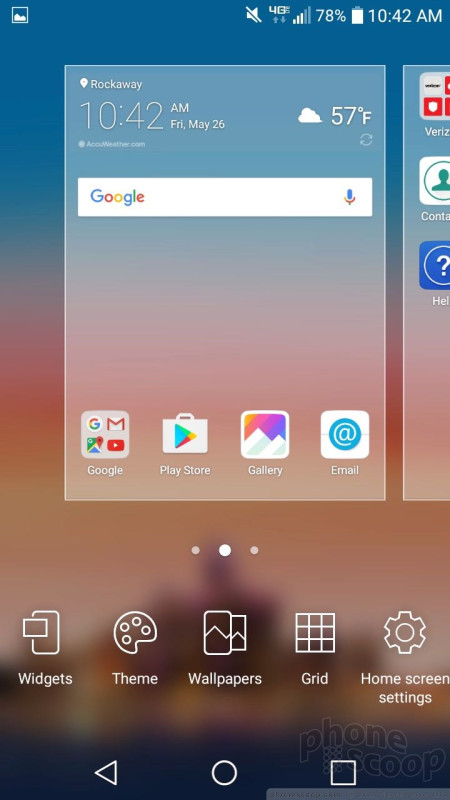







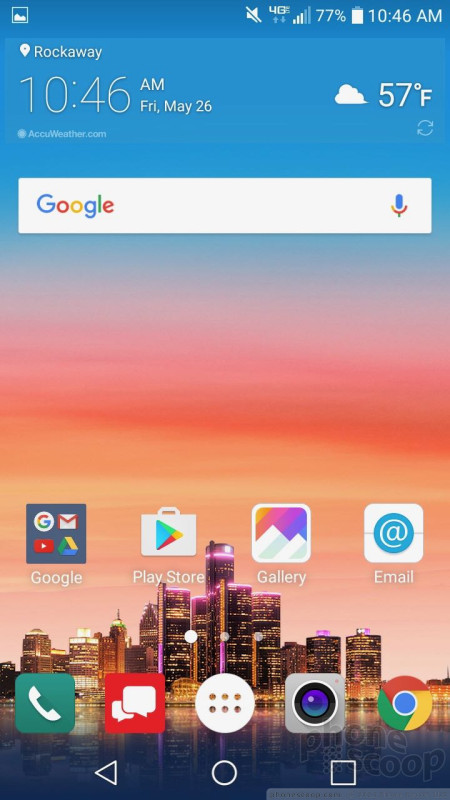








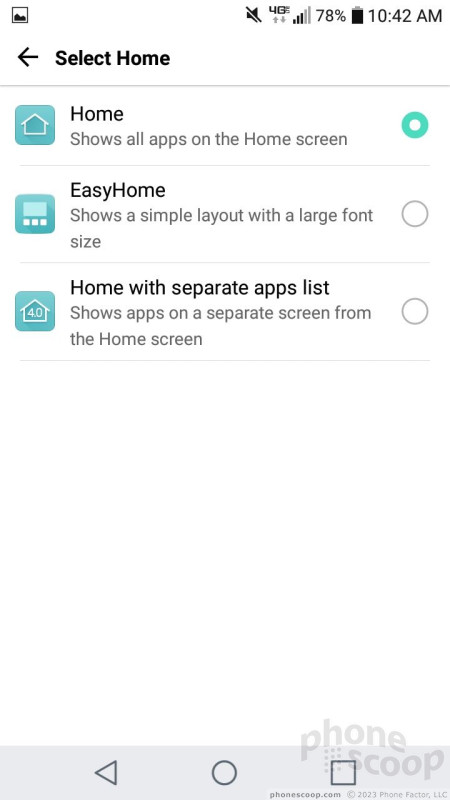





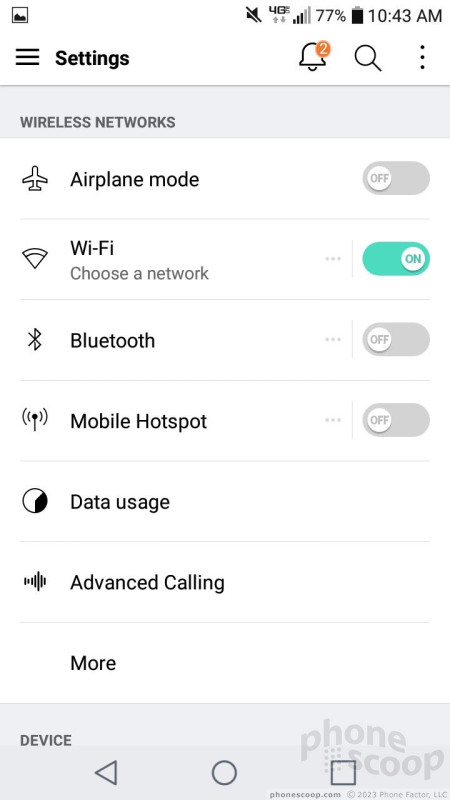





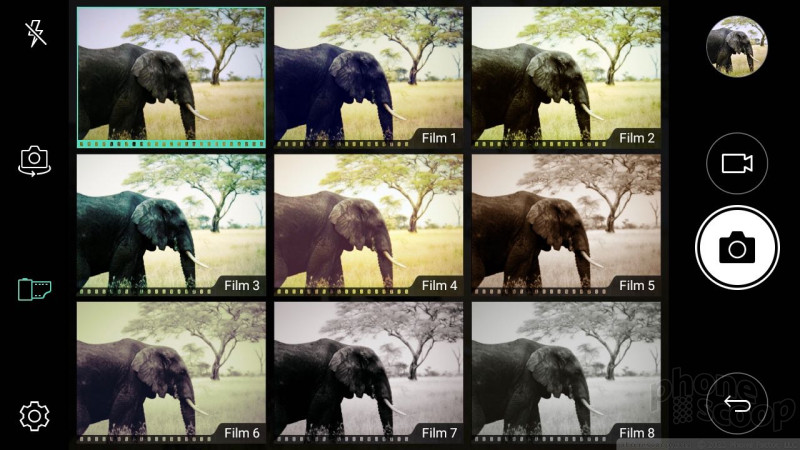























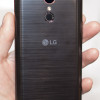 Hands on with LG's Updated K10
Hands on with LG's Updated K10
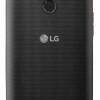 T-Mobile's LG K20 Plus Packs Better Specs
T-Mobile's LG K20 Plus Packs Better Specs
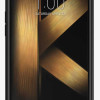 LG K20 V Hits Verizon Today for $170
LG K20 V Hits Verizon Today for $170
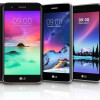 LG Reveals Mid-Range K Series Ahead of CES
LG Reveals Mid-Range K Series Ahead of CES
 LG K20 V / K20 plus
LG K20 V / K20 plus




